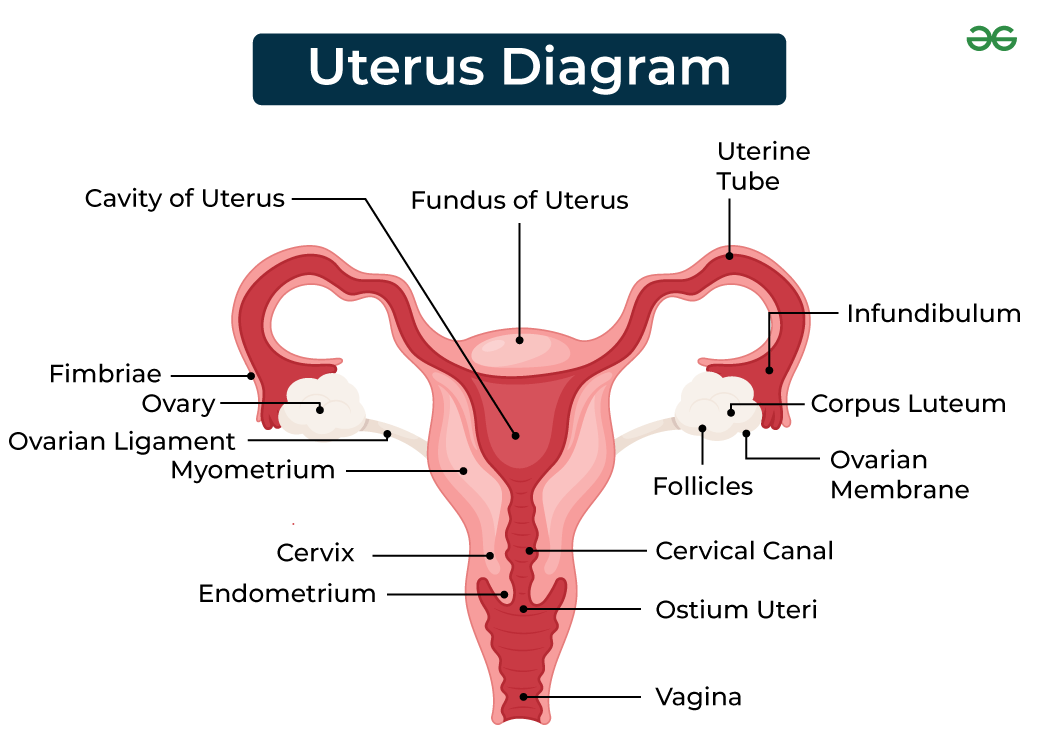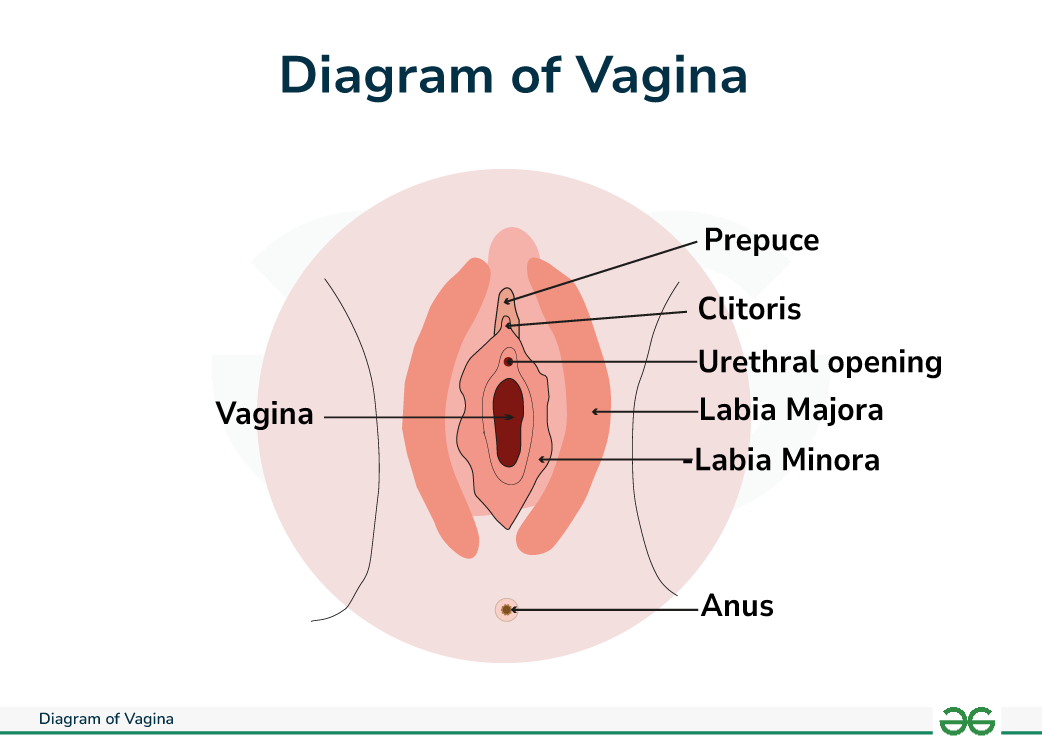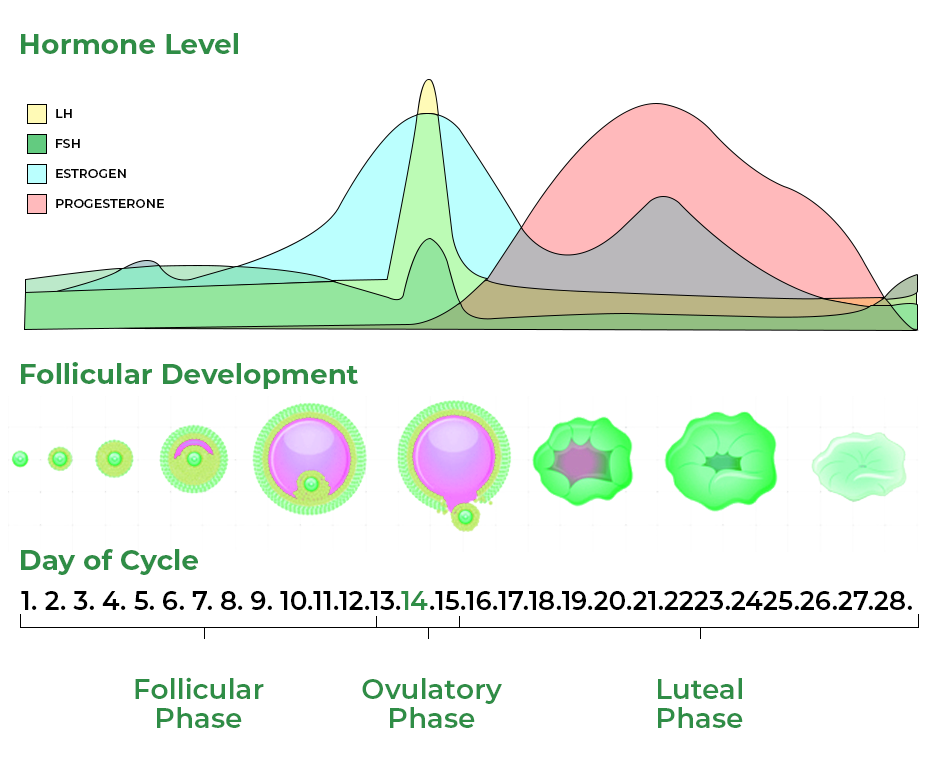The female reproductive system is made up of the internal and external sex organs which play an important part in reproduction. The female reproductive system parts and functions also play a crucial role in hormonal regulation and menstrual cycle regulation.
The vagina, uterus, fallopian tubes, and ovaries are the internal sex organs. This article will cover the female reproductive system diagram, anatomy, and functions in detail.
Female Reproductive System
The female reproductive system includes both the primary and secondary sex organs as essential parts. The primary sex organs in females are two ovaries, which also emit female sex hormones including progesterone and estrogen in addition to producing ova or eggs. The uterus, fallopian tubes, cervix, and vagina are the secondary sex organs.
The labia minora, labia majora, and clitoris make up the external genitalia. The mammary glands are also significant glands and play an important role in the female reproductive system. These components together help in the ovulation, fertilization, labour, and delivery processes, as well as child care.
Female Reproductive System Diagram
The labelled diagram of female reproductive system is given below:

Female Reproductive System Parts and Functions
The female reproductive system was designed to serve many functions. It produces ova, or egg cells, which are necessary for reproduction. The reproductive system is set up to carry the ova to the fallopian tubes where the egg and sperm are fertilized. The next step for fertilized eggs is to implant in the uterine walls and start the phases of pregnancy. The female reproductive system also contributes to the generation of female sex hormones, which also help to keep the reproductive cycle regular.
The structure of female reproductive system consists of various componenets where each of them have specific roles. The parts and functions of female reproductive system are discuss below:
Ovaries
The primary female sex organs that create the female gamete and other hormones are the ovaries. One of these organs is located on either side of the lower abdomen. Each ovary is between 2 and 4 cm long, and ligaments connect them to the uterus and pelvic wall. The ovary is separated into two zones—the outer cortex and the inner medulla—and is covered by a thin layer of epithelium that encloses the ovarian stroma.

Diagram of Ovary
Numerous ovarian follicles in various developmental stages make up the cortex. The primary component of the female reproductive system is referred to as the ovarian follicle. Ampulla, isthmus, and infundibulum are the three anatomical regions that make up each oviduct.
Uterus
It is a muscular female reproductive organ with an inverted pear form. There are three layers that make up the uterus’s walls: an inside glandular layer, a middle thick layer, and an outside thin layer. Ligaments linked to the pelvic wall, which opens into the vagina from a thin cervix, support these three layers. The birth canal is made by the vagina and the cervical canal. A muscular tube called the vagina extends from the uterus‘ lower end to the outside.

Fallopian Tubes
A pair of muscular, funnel-shaped structures called fallopian tubes run from the right and left superior corners of the uterus to the margin of the ovaries. The eggs discharged from the ovaries are picked up by these tubes, which are encased in tiny projections called fimbriae, which then transport them to the infundibulum where they supply the uterus. Cilia on each fallopian tube serve the purpose of transporting the ovum to the uterus.
Vagina
The muscular and elastic tube that links the cervix to the outside body is called the vagina. It serves as the penis’s container during sexual activity and transports sperm to the uterus and fallopian tubes. By enlarging to allow the delivery of the fetus during childbirth, it also serves as a birth canal.

Cervix
The uterine cervix, a tubular structure that connects the vagina and uterine cavity, serves as a passage between the two. At the cervical os, the inferior cervix opens into the upper vagina. The cervix’s lining that extends into the vagina is referred to as the ectocervix and is made up of stratified squamous epithelium.
The endocervix, which is made of columnar epithelium, lines the interior of the cervical canal. The transformation zone is the area where the ecto- and endocervix converge and is distinguished by the change from columnar to squamous epithelium.
Labia Minora
The smaller lips are referred to as labia minora. They are a pair of very small cutaneous folds that descend from the clitoris. The anterior folds of the labia minora that encircle the clitoris create the clitoral hood and frenulum of the clitoris. The limits of the vulva vestibule are then formed by the labia minora deviating downward and obliquely.
Labia Majora
The lateral and longitudinal margins of the vulval clefts are defined by the labia majora, a prominent pair of cutaneous skin folds. The clitoris, labia minora, vulva vestibule, Bartholin’s glands, vestibular bulbs, Skene’s glands, vaginal entrance, and urethra are all protected by the folds they produce.
Clitoris
The clitoris is an erectile organ that resembles the male penis. It is made up of two corpora cavernosa, the glans, and prepuce. The female homologue of the penis, the clitoris is situated below the mons pubis. The clitoris is made up of two erectile vascular tissue corpora cavernosa that are adjacent to each other and encircled by a fibro collagenous sheath. A central septum that is incomplete partially separates the two corpora.
Also Read: Diagram of Female Reproductive System
Ovulation
The process of releasing the eggs from the ovaries is called ovulation. When the follicle is fully developed and reaches its maximum size, this process occurs together with the buildup of fluids inside the follicle without a noticeably increased rise in pressure. The stigma, also known as the macula pellucida, first emerges jutting outward as a transparent cone area when the follicle grows out.
Later, the stigma experiences localized changes in color, integrity, and translucency. Before ovulation, estrogen hormone release peaks at its highest level. At the site of the stigma, ovulation takes place after the luteinizing hormone surge. This increase is necessary for ovulation.
Also Read: Difference Between Estrogen And Progesterone
Menstrual Cycle
After reaching puberty, every month during a process known as the menstrual cycle, all females generate mature egg cells. A developed egg is released from an ovary during this time and goes to the uterus. If the egg in the uterus is not fertilized, the uterine lining sheds and a new cycle starts.
A menstrual cycle typically lasts 28 days, however, it’s possible for them to last up to 35 days in some people or as little as 21 days in others. The endocrine system regulates the entire menstrual cycle, and the hormones FSH, LH, estrogen, and progesterone are involved. The pituitary gland produces both the FSH and LH hormones, whereas the ovaries generate estrogen and progesterone.

Except during pregnancy, menstrual cycles happen every month from the time of puberty until the age of 45 to 55. The release of mature eggs and hormone synthesis by the ovaries both decrease after the age of 55. Gradually, the menstrual cycle ends, making it impossible for the woman to get pregnant.
Functions of Female Reproductive System
The female reproductive system plays important role in maintaining overall health. Some of these function are:
- Production of female gametes (eggs or ova) through the process of oogenesis.
- Reception of sperm during sexual intercourse, facilitating fertilization.
- Development and nurturing of the fertilized egg (zygote) into an embryo within the uterus.
- Secretion of hormones such as estrogen and progesterone, regulating menstrual cycles and supporting pregnancy.
- Formation of structures like the fallopian tubes, uterus, and vagina to facilitate conception, gestation, and childbirth.
- Provision of an environment conducive to fetal development during pregnancy, including nutrient supply and waste removal.
- Initiation and regulation of the menstrual cycle, involving ovulation, thickening of the endometrium, and shedding of the uterine lining during menstruation.
Conclusion – Female Reproductive System
In conclusion, the female reproductive system comprise of internal and external sex organs. It is crucial for reproduction and hormonal regulation. The parts and functions of female reproductive system the ovaries, uterus, and fallopian tubes, contribute to ovulation, fertilization, and childbirth. Additionally, the female reproductive system functions include hormone secretion, menstrual cycle regulation, and providing an environment for fetal development.
Also Read:
FAQs on Female Reproductive System –
What is the Female Reproductive System?
The female reproductive system includes the organs and structures involved in reproduction, including the ovaries, fallopian tubes, uterus, cervix, and vagina.
Write the Functions of the Ovary.
The ovary functions to produce and release eggs (ova) during ovulation and secretes hormones such as estrogen and progesterone.
What is the Cervix?
The cervix is the lower part of the uterus that connects to the vagina, serving as a passageway for menstrual flow, sperm, and childbirth.
What are Fallopian Tubes?
A pair of muscular, funnel-shaped structures in the female reproductive system are called fallopian tubes. They run from the right and left superior corners of the uterus to the margin of the ovaries.
What are the External Female Reproductive System?
The female reproductive system refers to the organs and structures responsible for reproduction and fertility in females. It includes the ovaries, fallopian tubes, uterus, cervix, and vagina.
Please Login to comment...